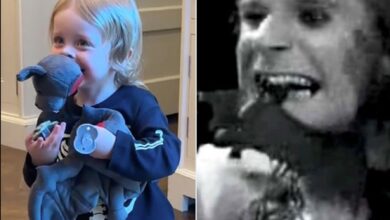When Elvis Flashes That Smile and Ann-Margret Starts to Move, You Know You’re Witnessing Pure Magic Unfold
When Elvis struts into “C’mon Everybody,” he doesn’t just enter the room—he takes it over like he’s always belonged. From the instant the beat explodes in *Viva Las Vegas*, the energy shifts. There’s no slow buildup. It detonates. Ann-Margret throws down a playful challenge with her moves, and Elvis responds with equal fire. Their interaction goes far beyond dancing—it’s an unspoken duel brimming with heat and tension that threatens to set the whole stage ablaze.
Every move Elvis makes feels natural, like the music flows directly through him. His body reacts not with choreography, but with something deeper—instinct. His confident grin lands somewhere between flirtation and ferocity, never crossing into arrogance. Across from him, Ann-Margret doesn’t merely follow his lead—she meets his intensity, stride for stride. Their dance becomes more than entertainment; it’s a visual declaration of presence, of power, of perfect harmony that elevates the entire scene.
Rather than being overshadowed by the King of Rock ‘n’ Roll, Ann-Margret claims her own space with unmistakable fire. Her movements are sharp, fluid, and radiate confidence that doesn’t ask for attention—it demands it. There’s a balance to their exchange that feels rare; it’s a rare moment in cinema where both leads burn equally bright. Neither of them plays it safe. It’s a collision of forces, mutual magnetism drawing eyes to the screen decades later.
The chemistry between Elvis and Ann-Margret wasn’t a scripted element—it was palpable, something that leaped off the screen and into the hearts of audiences. There’s a reason people still revisit this scene today. It doesn’t feel like two actors hitting their marks. It feels like lightning captured in celluloid. Every glance and every step is filled with tension, humor, and raw attraction. And that’s why it still sizzles, even in 4K resolution.
Filmmakers often try to capture spontaneity, but few succeed the way this scene does. The electricity is in the air. The lighting, the music, the tension—they all swirl together into something that feels too wild to be choreographed. Even the extras fade away. All you see is Elvis and Ann-Margret caught in their own world, a dance that says more than any line of dialogue ever could. It’s not just acting—it’s alchemy.
Ann-Margret hot dance with Elvis Presley in Viva Las Vegas (4K)
Fans still label this as one of cinema’s hottest on-screen moments—not because of the choreography, but because of the honesty. Nothing feels staged. Their chemistry is fluid, unscripted, and infectious. It doesn’t rely on dramatic lighting or music cues; it exists in the unspoken conversation between two performers who understood what it meant to connect. It’s rare, and it’s unforgettable. Every frame pulses with genuine energy that can’t be taught or faked.
Contrast that with the stormy restraint of “Trouble / Guitar Man” from the ’68 comeback special. There, Elvis appears alone, draped in black leather, framed by shadows. He opens with the line “If you’re looking for trouble,” and it doesn’t sound like a lyric—it’s a challenge. In that moment, he’s not trying to charm. He’s commanding attention with quiet force. It’s another side of the man, just as powerful, but delivered with intense control.
Elvis Presley – Guitar Man Production Number (’68 Comeback Special)
With “Guitar Man,” Elvis didn’t need fanfare. His presence was enough to fill the frame. As the beat kicks in, stillness gives way to an effortless groove. His motions are sharp, his confidence unwavering. It’s not about dancing anymore—it’s about ownership. The way he slides into the rhythm, with every strum and step, he’s no longer just performing. He’s becoming a part of the music, fusing with it completely. It’s the kind of transformation only true icons achieve.
Whether side by side with a fierce female partner or standing alone under a spotlight, Elvis had a gift. He didn’t just entertain—he became the pulse of the room. It’s why scenes like these never age. The way he could go from wild to subtle, from flashy to haunting, always pulling you into his orbit, remains unmatched. He was the moment, every time. And even decades later, he still is.





